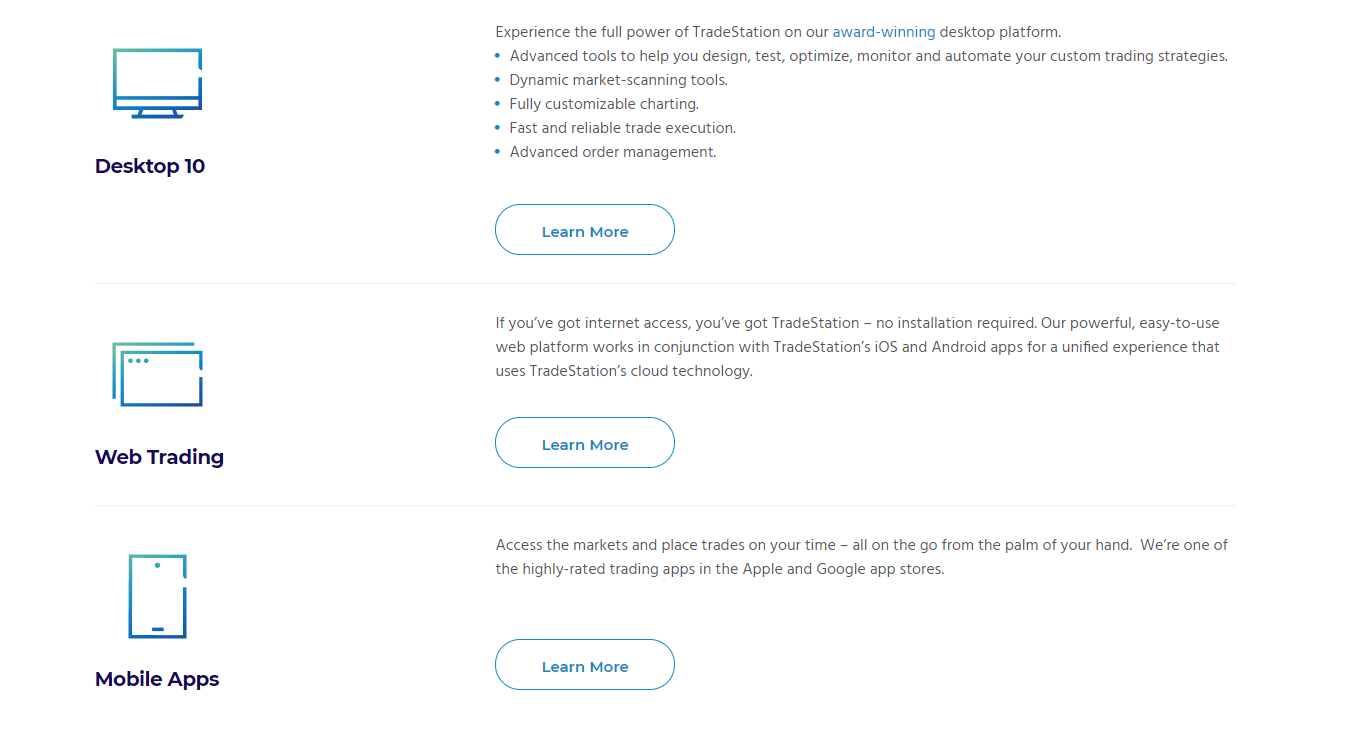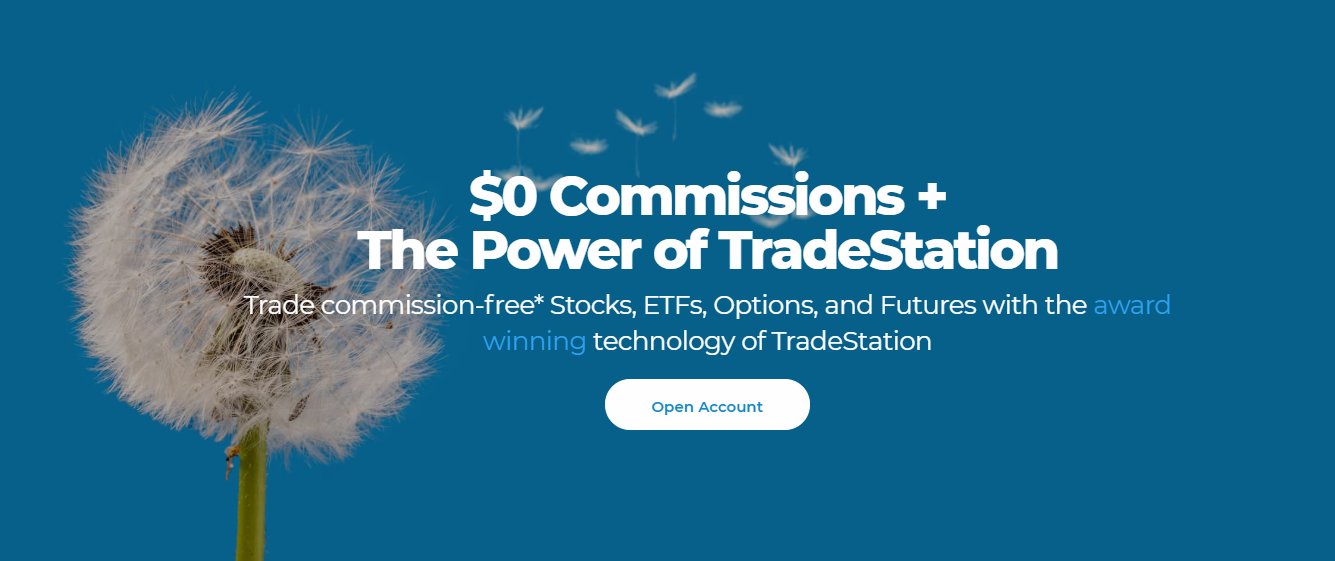Introduction
With a history dating back to 1982, TradeStation is a US broker with its parent company, Monex Group, listed on the Tokyo Stock Exchange. Widely-considered as a safe company, it’s regulated by FINRA, a top tier US regulator, and its clients are eligible for the SIPC investor protection scheme, offering up to $500,000 (up to $250,000 in cash).
TradeStation offers access to a wide range of trading products, including stocks, ETFs, mutual funds, options, and futures. What’s important to mention about the company is its flexibility when it comes to fee, clients being to choose from a few different fee structures.
Platforms
In line with other big names, TradeStation has three different trading platforms: web-based, desktop, and mobile. Renewed in 2018, the Web Trading Platform now has a good design and user experience. Both beginners are advanced traders are able to use it comfortably. Two-step authentication, search function, 7 different order types, alerts, and notifications, are just a few of the features built into it.
Considered to have the most functions, the TradeStation desktop platform is the right fit for advanced and professional clients. Good customizability, strong login procedure, search function, portfolio, and fee reports are the most important features to mention.
The mobile platform gets above-average reviews, available both for iOS and Android devices. It carries most of the functionalities seen on the web-platform, allowing clients to trade on the go and monitor their portfolio.
DMA Trading
At TradeStation, clients can only trade stocks and ETFs based in the US, from NYSE or NASDAQ. This could be a negative point for clients wanting to trade global assets. It also offers access to 60 fund providers, less than other companies. There is little information on bond coverage but when it comes to options, the company is in a better position.
Thankfully, one of the greatest advantages of dealing with this company has to do with fees. For US stocks, trading fees are low, starting from $0.01 per share, but for US tech funds fees are larger, currently 14.95% per transaction. Another downside is the inactivity fee, applicable per year if less than 2,000 USD on balance or less than 5 trades per year.
Available only on the desktop platform, recommendations about each asset class are written by TradeStation staff. On the fundamental data front, Yahoo is the main provider and this is also available only for desktop platform users.
Pros and Cons
- Great mobile trading platform with a wide range of research tools.
- TradeStation offers high-quality educational tools.
- The company has more fee structures clients can choose from.
- Deposits and withdrawals are not user-friendly.
- No coverage for currency-related instruments.
- A high inactivity fee of $50 per year.
Summary
TradeStation is a popular DMA company, offering reliable services, but when it comes to its performance as compared to other competitors, it lags behind in terms of fees, number of instruments available for trading, among others. It’s still one of the best choices for traders who want to focus solely on the US market.
TradeStation Review
Product Name: TradeStation
Product Description: With a history dating back to 1982, TradeStation is a US broker with its parent company, Monex Group, listed on the Tokyo Stock Exchange. Widely-considered as a safe company, it’s regulated by FINRA, a top tier US regulator, and its clients are eligible for the SIPC investor protection scheme, offering up to $500,000 (up to $250,000 in cash). TradeStation offers access to a wide range of trading products, including stocks, ETFs, mutual funds, options, and futures. What’s important to mention about the company is its flexibility when it comes to fee, clients being to choose from a few different fee structures.
Brand: TradeStation
Offer price: 100$
Currency: USD / EUR / GBP
Offer URL: https://www.tradestation.com/
-
Trading Platform
-
Languages
-
Spread
-
Support
Summary
TradeStation is a popular DMA company, offering reliable services, but when it comes to its performance as compared to other competitors, it lags behind in terms of fees, number of instruments available for trading, among others. It’s still one of the best choices for traders who want to focus solely on the US market.


